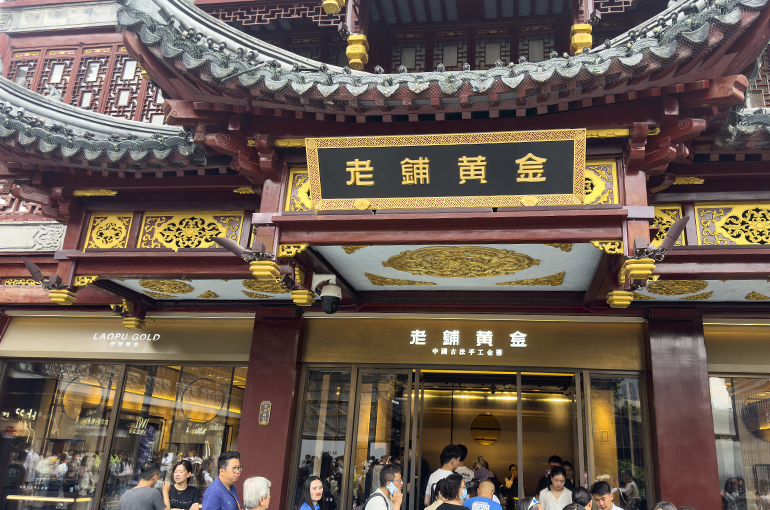 Chinese Jewelry Brands Expand Overseas as Domestic Demand Shrinks Amid Record Gold Prices
Chinese Jewelry Brands Expand Overseas as Domestic Demand Shrinks Amid Record Gold Prices(Yicai) Oct. 9 -- Chinese gold jewelry brands have begun to expand overseas, especially in Southeast Asia, as the domestic demand has shrunk due to record gold prices.
Laopu Gold opened a store in The Shoppes at Marina Bay Sands in Singapore in June as the launching pad for its expansion in other Asian cities, according to the high-end Chinese brand specializing in traditional gold craftsmanship.
Spot gold surpassed USD4,000 per ounce yesterday, up 52 percent so far this year to a new historic record. However, China's gold consumption fell 3.5 percent to just over 505.2 tons in the first half of the year, with gold jewelry consumption plunging 26 percent to 199.8 tons, according to the latest data from the China Gold Association.
Laopu Gold's overseas business revenue surged 455 percent in the first half from a year earlier, accounting for nearly 13 percent of the total revenue, according to the company's latest earnings report.
"Singapore has a deep-rooted Chinese cultural heritage and a high acceptance of traditional Chinese gold, which provides a fertile ground for Laopu Gold to replicate its successful model from the Chinese market," said Chen Jingjing, founder of Jingjie Brand Consulting.
"Moreover, as a key destination for international high-net-worth tourists, Singapore has a strong luxury retail atmosphere," Chen noted. "Being associated with international high-end brands can enhance Chinese luxury products' international exposure and facilitate their entry into the highly competitive luxury consumer market."
Guangdong CHJ Industry, a Chinese jewelry and fashion consumer good brand, opened its first overseas store in Kuala Lumpur in Malaysia and Bangkok in Thailand in August last year. It quickly gained traction, thanks to products that blend traditional intangible cultural heritage silk craftsmanship with modern design.
Chow Tai Fook Jewellery, another Chinese jewelry brand, began expanding into overseas markets earlier than its peers and now has stores in Southeast Asia, North America, Japan, and other regions.
Other brands are foraying into international markets through e-commerce channels. For example, the Chow Tai Seng Jewelry has established a TikTok team to promote its products on the short-video platform overseas.
Chinese gold companies told Yicai they prefer to expand in Southeast Asia when going global because the region has a large and young population that values Chinese gold products and has stronger consumption willingness and higher demand for wedding-related products, which creates ample space for the rapid development of the gold and jewelry market.
However, industry insiders believe that Chinese jewelry and gold enterprises still face several challenges and risks in the Southeast Asian market.
First and foremost, enterprises need to adapt their product designs to local demand, the marketing head at a listed Chinese gold firm told Yicai. Many domestic products are based on Chinese cultural connotations, and without changes, they may not appeal to overseas customers, they added.
Moreover, consumers in different countries have different preferences regarding the purity, style, and cultural significance of gold, the marketing head noted.
Editor: Futura Costaglione